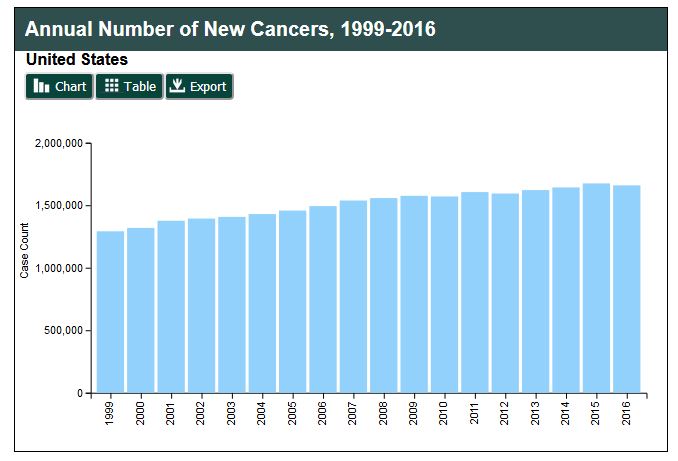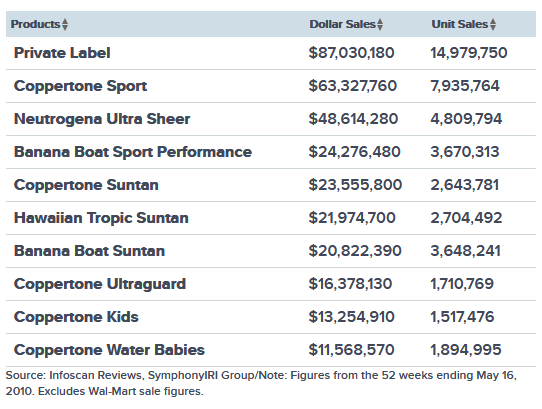Sunscreen: What We All Should Know

Everything everywhere is SUMMER!!! YAY summer! Except, SERIOUSLY WHERE IS SUMMER!?!??!
Well, the other day while I was at the store, giddily reveling amidst the gigantic beach towels, coolers and slice-of-pizza-raft (that I think I must have) - there was a big display of sunscreen!!! I know, I know – here I am AGAIN – talking about sunscreen!

First. WARNING: Once you know, you can’t unknow. So here goes…
Since we started One Love Botanicals and making our own products, I have wanted to do a deep dive into the whole sunscreen ingredient list. I know there’s junky stuff in it, but I never really looked to see HOW junky. So, while I was at the store, I snapped a few pictures of the ingredient list of a fairly popular Kid’s Sunscreen. I’m guessing that most of the commercial sunscreens have the same-ish ingredients, but I don’t know. I am only going off this particular ingredient list.
When I think about commercial sunscreen, I imagine putting nasty and harmful chemicals all over my child’s small warm body, full of open pores, just soaking up those chemicals right into her body. Nope. No thank you! And – the first thing I noticed on the bottle, before the laundry list of chemicals (13 ingredients to be exact), was:
“Apply AT LEAST every 2 hours”.. WHAT? Seriously? Just keep on slathering the stuff all day?
HARD SIGH.
Ok, anyway – enough about my ranting. I looked up each ingredient and googled it. I didn’t look for the bad stuff, to prove any point. I typed in the ingredient as-is and looked for the most non-biased answer to my search. Most times, my search popped up with a symbol of the what the chemical compound looks like (grrr), so that’s what I’m going with – seems like the most scientific. After I was finished looking up the ingredients, I noticed on some that the first link was talking about how it was illegal or banned in European countries. I went back through the list and looked to see if that particular ingredient was illegal in Europe – You’ll see that bolded and underlined.
In order, from the label:
- Water
- Propylene glycol – Used by the chemical, food and pharmaceutical industries and an antifreeze when leakage might lead to contact with food. The FDA has classified as an additive that is “generally recognized as safe” for use in food. ILLEGAL IN EUROPE
- C12-15 alkyl benzoate – Used as an emollient and texture enhancing agent in cosmetics and personal care products. It is generally considered to be safe.
- Neopentyl glycol diheptanoate – Used an emollient in skin care products for skin conditioning and viscosity increasing agent.
- Cyclopentasiloxane - Silicone used in cosmetic products – most commonly used in medical implants, sealants, lubricant and windshield coatings. It gives a slippery and silky feeling when applied to the skin. WILL BE BANNED IN EUROPE EFFECTIVE 1/1/2020
- Cetyl PEG/PPG – 10/1 dimethicone – Used as an emulsifying and conditioning agent. Synthetic chemical, silicone-based that provides emolliency and water binding properties. As a bi-product when producing 10/1, 1-4 is also made. 1-4 is reasonably anticipated to be a human carcinogen (which is a substance capable of causing cancer in living tissue). ILLEGAL IN EUROPE
- PEG-12 dimenthicone crosspolymer – Used to give a smooth feel and promote spreadability. PEG 12 is a moderate hazard (depending on usage) and notes on contamination and toxicity concerns. According to the International Journal of Toxicology, PEGs (including PEG 12) can contain harmful impurities, increasing the incidences of uterine and breast cancers and of leukemia and brain cancer.
IF ANYONE IS COUNTING – PEGs are numbers 6 and 7 on the ingredient list….. you know, PEGs are those pesky potential cancer causers. Numbers 6 and 7 in a lotion they want us to slather all over ourselves and our children.
- Triethoxycaprylylsilane – (First of all, wow what a word) - An emulsifier that prevents the oily and liquid parts of a formula from separating. It seems like parts of this chemical are banned in Europe.
- Aloe Barbadensis Leaf Extract – Actually comes from the leaves of an Aloe plant and is used to soothe skin and serves as an anti-inflammatory.
- Ethylhexyl Palmitate – A derivative of palm oil and is used as a solvent, carrying agent, pigment wetting agent, fragrance fixative and emollient. It is used to adjust consistency.
- Diazolidinyl urea- A chemical used as an antimicrobial preservative. It is chemically related to imidazolidnyl urea which is used in the same way and acts a s a formaldehyde releaser. It protects from bacteria, yeast and molds known to cause spoilage. There seems to be controversy around this ingredient because some say it is both toxic and carcinogenic due to the proven formaldehyde releaser, but other studies say it is not toxic because of the amount of this ingredient used in most products. ILLEGAL IN EUROPE
- Methylparaben – This paraben is used as a preservative to give products a longer shelf life. Again, according to the Journal of Applied Toxicology, 18 of 20 breast tumors showed high concentrations of parabens which are known to mimic estrogen in the body and affect the growth of breast tissue. BANNED IN EUROPE.
- Propylparaben – Although naturally found in plants and insects, this is manufactured, synthetically and used as a preservative. Like the above paraben, it is known to be an endocrine disruptor (same as the above listed paraben). EUROPE REQUIRED REDUCED AMOUNT IN PRODUCTS
- Sodium Chloride – Commonly known as salt and is used for a number of things, but probably in sunscreen because it is a thickening agent.
So many people will say what people always say when new research results come to light… “we've been using the same stuff forever and we’re all fine. My parents put it on me and I don't have cancer…” You know what I’m talking about!! That’s the “go-to” line for what people. I’ve said it myself.
Here’s the thing…. CANCER IS INCREASING.
~ If cancer is increasing year over year;
~ If Europe has banned ingredients in the sunscreen we put on ourselves and our kids;
PLEASE tell me why anyone would want to continue using this stuff?
On the Center for Disease Control and Prevention website, it shows a very steady increase of new cancer cases over the years.
If there are so many ingredients in a product that are known to cause cancer, why would a company sell this toxic poison to us?
- They are allowed to.
- The ingredients are CHEAP
- MONEY! Who’s surprised? Take a look at this!
According to CNBC.com (from 2010)
So yeah, I have an issue with companies profiting off a product that we put on our children, in the name of protecting them. I know that there is a better way! We don’t HAVE to use ANY of these harmful, poisonous, toxic ingredients in our sunscreen. Here it is, in black and white:
| Coppertone Kids Sunscreen |
| Water |
| Propylene glycol |
| C12-15 alkyl benzoate |
| Neopentyl glycol diheptanoate |
| Cyclopentasiloxane |
| Cetyl PEG/PPG – 10/1 dimethicone |
| PEG-12 dimenthicone crosspolymer |
| Triethoxycaprylylsilane |
| Aloe Barbadensis Leaf Extract |
| Ethylhexyl Palmitate |
| Diazolidinyl urea |
| Methylparaben |
| Propylparaben |
| Sodium Chloride |
| Sun Lovers Sunscreen |
| Organic Jojoba Oil |
| Organic Coconut Oil |
| Organic Beeswax |
|
Zinc Oxide
|
| Red Raspberry Seed Oil |
| Carrot Seed Oil |
| Vitamin E Oil |
| Coconut Essential Oil |
I didn’t write this blog to promote our product. I wrote this because there needs to be awareness about companies allowed to use ingredients that are poisoning us. We all need to be educated and make decisions we feel good about.
I hope this made you question what you use as a sunscreen when your intentions are to protect yourself and your children against skin cancer.
If you are looking for a sunscreen with really amazing and SAFE ingredients, click here: Sun Lover's Sun Screen
For testimonials from people who love Sun Lover's Sunscreen click here.



Comments
Post new comment